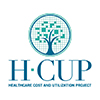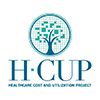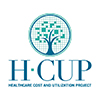National Healthcare Quality and Disparities Report
Latest available findings on quality of and access to health care
Data & Analytics
- Data Infographics
- Data Visualizations
- Data Tools
- Data Innovations
- All-Payer Claims Database
- Consumer Assessment of Healthcare Providers and Systems (CAHPS®) Program
- Healthcare Cost and Utilization Project (HCUP)
- Medical Expenditure Panel Survey (MEPS)
- National Healthcare Quality and Disparities Report Data Tools
- Network of Patient Safety Databases
- AHRQ Quality Indicator Tools for Data Analytics
- Surveys on Patient Safety Culture
- United States Health Information Knowledgebase (USHIK)
- Data Sources Available from AHRQ
Data Resources
Filter by Topic
- Access to Care (4)
- Adverse Events (1)
- Ambulatory (2)
- By Payer (2)
- (-) By State (3)
- Children (3)
- Children (1)
- Children/Adolescents (1)
- Clinicians (1)
- Community Pharmacies (1)
- Costs (2)
- Costs & Charges (1)
- Coverage (4)
- Data (3)
- Discharges by State (1)
- Disparities (2)
- Elderly (1)
- Element Definitions, Values & Information Models (1)
- Emergency Departments (4)
- Employer (1)
- Estimates (State & Metro) (1)
- Expenditures & Projections (3)
- Health (5)
- Health Care (8)
- Health Conditions (5)
- (-) Health Plans (3)
- Health Systems (1)
- Hospital Characteristics (2)
- Hospitalizations (10)
- Household Spending (1)
- Injuries Seen (1)
- Inpatient Care (1)
- Insurance (9)
- Medicaid (1)
- Medicare (1)
- Men (1)
- Mental Health (3)
- Mental Health and Substance Abuse Disorders (2)
- Obesity (1)
- Opioids (1)
- Patient Experience (1)
- Payment Sources (1)
- Premiums (1)
- Prescription Drugs (1)
- Preventable (1)
- Private (1)
- Quality (3)
- Readmissions (2)
- Safety Culture (1)
- SCHIP (1)
- Spending (2)
- State (1)
- Surgery (3)
- Systematic Review (1)
- Systems - Characteristics (1)
- Uninsured (2)
- Use (3)
- Visits (2)
- Women (2)
Data Resources
The Agency for Healthcare Research and Quality (AHRQ) offers practical, research-based tools and other resources to help a variety of health care organizations, providers and others make care safer in all health care settings.
Results
1-6 of 6 Resources displayed
The CAHPS Database (formerly known as the National CAHPS Benchmarking Database) is the repository for data from selected CAHPS surveys. The primary purpose of the CAHPS Database is to facilitate comparisons of CAHPS survey results by and among survey users. To support the use of CAHPS survey results, the CAHPS Database offers products and services that include comparative benchmark results, custom analyses, and data for research purposes. Participation in the CAHPS Database is free and open to all survey users.

HCUPnet is a free, on-line query system based on data from HCUP. The system provides health care statistics and information for hospital inpatient, emergency department, and ambulatory settings, as well as population-based health care data on counties.

The MEPS Insurance Component fields questionnaires to private and public sector employers to collect data on the number and types of private health insurance plans offered, benefits associated with these plans, annual premiums, annual contributions by employers and employees, eligibility requirements, and employer characteristics.

The public sources for health insurance identified in the MEPS include Medicare, TRICARE, Medicaid, SCHIP, and other public hospital/physician coverage. In addition to the tables and publications provided below, data files with annual and monthly insurance indicators, experience with public plans, and more can be downloaded for further analyses.

The State Ambulatory Surgery and Services Databases (SASD) are part of the family of databases and software tools developed for the Healthcare Cost and Utilization Project (HCUP). The SASD include encounter-level data for ambulatory surgeries and may also include various types of outpatient services such as observation stays, lithotripsy, radiation therapy, imaging, chemotherapy, and labor and delivery. The specific types of ambulatory surgery and outpatient services included in each SASD vary by State and data year. All SASD include data from hospital-owned ambulatory surgery facilities. In addition, some States include data from nonhospital-owned facilities.

The State Inpatient Databases (SID) are State-specific files that contain all inpatient care records in participating states. Together, the SID encompass more than 95 percent of all U.S. hospital discharges. The uniform format of the SID helps facilitate cross-state comparisons. In addition, the SID are well suited for research that requires complete enumeration of hospitals and discharges within geographic areas or states.



